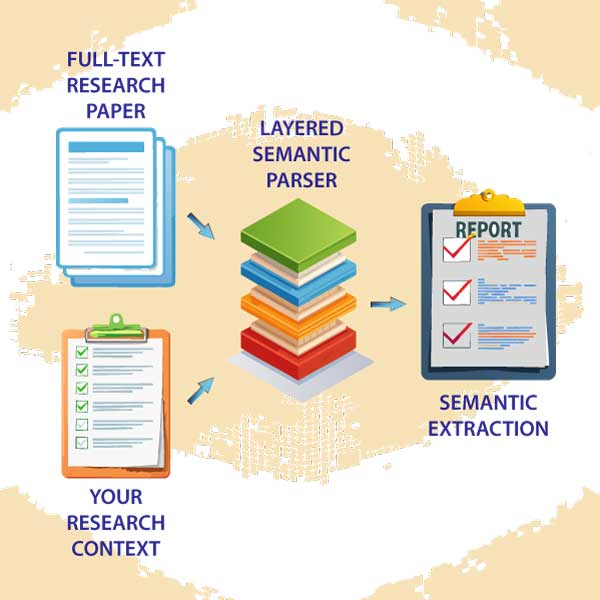| General Features |
| Cost per paper |
1 token |
3 tokens |
| Research context required |
|
Yes |
| Output Format |
| Acrobat (.pdf) |
|
|
| Excel (.xslx) |
|
|
| HTML (.html) |
|
|
| JSON (.json) |
|
|
| Text (.txt) |
|
|
| Word (.docx) |
|
|
| XML (.xml) |
|
|
| Output Fields |
| Title |
Yes |
Yes |
| Year |
Yes |
Yes |
| Authors |
Yes |
Yes |
| Source Type |
Yes |
Yes |
| Source Name |
Yes |
Yes |
| Abstract |
Yes |
Yes |
| Keywords |
Yes |
Yes |
| My Research Insights |
| Research Context |
|
Yes |
| Supporting Points Highlights arguments, mechanisms, and evidence within the paper that align with your specific research context—reinforcing your hypothesis and offering structural parallels. |
|
Yes |
| Counterarguments Surfaces limitations, mismatches, and tensions between the paper’s focus and your research context—encouraging nuance and critical evaluation. |
|
Yes |
| Future Work Identifies new directions for exploration based on the paper’s findings—especially those that connect your context to broader domains and unresolved challenges. |
|
Yes |
| Open Questions Lists the unanswered and emerging questions raised by the paper—sparking reflection on what still needs to be addressed, and where your research could step in. |
|
Yes |
| Critical Insights Pinpoints transformative and novel ideas from the paper that reframe the problem, challenge assumptions, and introduce breakthrough analogies relevant to your inquiry. |
|
Yes |
| Research Gaps Addressed Reveals which blind spots in the literature the paper helps illuminate—especially those relevant to cross-disciplinary coordination, encoding, and system design. |
|
Yes |
| Noteworthy Discussion Points Flags broader themes and provocative angles that invite debate, interdisciplinary conversation, and rethinking of foundational ideas within your research area. |
|
Yes |
| Standard Summary |
| Objective Introduces the central goal of the paper—what the researchers aimed to prove and challenge, and why it matters within its field. |
Yes |
Yes |
| Theories Outlines the foundational concepts and frameworks the study builds upon, including any models and prior research that informed its approach. |
Yes |
Yes |
| Hypothesis Summarizes the authors’ core assumption and testable claim—what they predicted and expected to discover through their research. |
Yes |
Yes |
| Themes Highlights key topics, patterns, and philosophical undercurrents that recur throughout the paper—often broader than the hypothesis alone. |
Yes |
Yes |
| Methodologies Describes the methods used to conduct the research, including models, datasets, experimental setups, and procedural steps. |
Yes |
Yes |
| Analysis Tools Lists and explains the metrics, visualizations, and evaluation tools used to analyze data and test the research hypothesis. |
Yes |
Yes |
| Results Details the primary findings and outcomes—what the study revealed, supported by data, comparisons, and benchmarks. |
Yes |
Yes |
| Key Findings Emphasizes the most important takeaways from the study that may have broader implications and challenge existing knowledge. |
Yes |
Yes |
| Possible Limitations Identifies weaknesses, uncertainties, and constraints in the research design and results, as acknowledged by the authors. |
Yes |
Yes |
| Future Implications Suggests how the research could impact future work—whether through direct applications, further investigation, and paradigm shifts. |
Yes |
Yes |
| Key Ideas / Insights Showcases intellectual breakthroughs and fresh perspectives the paper introduces—what makes it matter. |
Yes |
Yes |
| Key Foundational Works |
Yes |
Yes |
| Key or Seminal Citations |
Yes |
Yes |
| Metadata |
| Volume |
Yes |
Yes |
| Issue |
Yes |
Yes |
| Article No |
Yes |
Yes |
| Book Title |
Yes |
Yes |
| Book Chapter |
Yes |
Yes |
| Publisher |
Yes |
Yes |
| Publisher City |
Yes |
Yes |
| DOI |
Yes |
Yes |
| arXiv Id |
Yes |
Yes |
| Access URL |
Yes |
Yes |
| Peer Reviewed |
Yes |
Yes |
